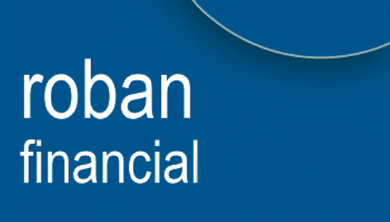Understanding your pension benefits and your rights is crucial, especially when you’re transitioning between jobs. Your pension benefits are governed and legally held by the trustees of the scheme, including firms such as Aon, Mercer, and Willis Towers Watson. Once you depart from your company, your legal status shifts from an ‘Active’ to a ‘Deferred’ member of the scheme. We’ll delve into the drawbacks of remaining a ‘Deferred’ member shortly.
Upon your departure, you should receive a critical document known as a ‘Leaving Service Options letter’ or your ‘Pension Benefits Options Statement’. This paper contains essential details, including your scheme join date, departure date, your pension’s value, and the choices applicable to your situation when leaving. Securing this document is crucial.
Fundamentally, you have three primary options when exiting your employer:
- Leave your Pension as is (take no action).
- Transfer your Pension to your new employer.
- Shift your Pension into an account under your name (Personal Retirement Bond / Buy-out Bond).
Option 1: Leave Your Pension Where It Is
Opting to leave your pension untouched might seem convenient, but it’s often not advisable. This is primarily because pension schemes are not compelled to maintain communication with you or provide annual updates on your pension’s management or investments. Consequently, you lose insight and control over investment decisions.
Frequently, employees’ pension savings are shifted from investments into cash, rendering them ineffective against inflation and subject to fund-associated charges. This impediment affects your pension’s growth, potentially derailing your retirement objectives.
If you’re contemplating leaving your current employer and reassessing your pension, ask yourself:
- Are the charges fair and clear?
- Is the Pension Provider communicative and helpful?
- Has your Pension demonstrated satisfactory performance?
If these aspects are concerning, it’s prudent to consider relocating your pension.
Benefits:
- As a deferred member, you can access your pension at the retirement age, take a tax-free lump sum, transfer funds into an annuity, or choose an Approved Retirement Fund (ARF). Drawbacks:
- Trustees are not required to maintain communication, meaning no regular updates.
- Your retirement options are confined to the scheme rules, including early retirement stipulations.
- Larger schemes often have restricted investment options, potentially leading to underperformance.
- Access to financial advice ceases once you’ve exited the company.
- The risk of forgetting about the plan increases with each job change.
- Premature death can complicate the process for your dependents.
Option 2: Transfer Your Pension to Your New Employer
Transferring your current benefits to your new employer’s pension scheme is an option, streamlining your retirement benefits. However, this isn’t universally permissible, and verification is necessary.
Though consolidation under one scheme might simplify calculating your total pension benefits and anticipated retirement income, it necessitates selling existing assets for the transfer, posing a market risk and potentially resulting in selling low and buying high.
Benefits:
- Consolidation keeps your pension controlled and unified. Drawbacks:
- Possible forfeiture of accrued salary and service rights, contingent on the new scheme’s type.
- Subsequent job changes reintroduce previous transfer concerns and requirements.
- Foregoing the chance to transfer the fund into your personal control.
Option 3: Move Your Pension into an Account in Your Own Name (Personal Retirement Bond / Buy-out Bond)
A Personal Retirement Bond (PRB) is tailored for assuming benefits from former employment, granting more control over your pension savings and investment strategy based on your risk tolerance, with financial advice available. This option allows switching providers for better value regarding charges, fund allocation rates, and access to funds, though further contributions aren’t possible.
Choosing this path severs ties with your previous employer, eliminating trustee involvement. While the charging structure might be higher with PRBs, depending on selected funds or asset classes, the trade-off is performance transparency and competitive charges relative to company pensions.
Benefits:
- Full autonomy over pension and investment decisions, with the fund personally owned.
- A financial advisor can formulate a bespoke investment strategy, preserving accumulated rights and enhancing retirement draw options.
- Efficient provider switching.
- Access to benefits from age 50, akin to the company scheme. Drawbacks:
- Potentially higher Annual Management Charges, depending on chosen funds or asset classes.
What Do We Suggest?
Typically, a Personal Retirement Bond is the most sensible choice, offering a direct method to carry your pension entitlements with you during job transitions. You’ve worked for your pension savings; it’s logical to want full control.
With professional financial guidance, the first step is determining if this route suits you. If affirmative, experts can navigate you through the pension transfer, ensuring proper setup, effective management, and ongoing monitoring.
How to Initiate the Transfer Process from My Old Employer?
If you’re planning to exit your employer or wish to manage pension benefits left previously, you must contact your company’s HR Department for your ‘Leaving Service Options.’
The HR team or pension administrator will request the trustees to provide your ‘Leaving Service Options Letter,’ detailing your benefits’ current value and your options.
For detailed guidance and assistance with understanding your options and making the right decision, contact Roban Financial.


